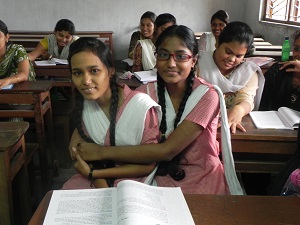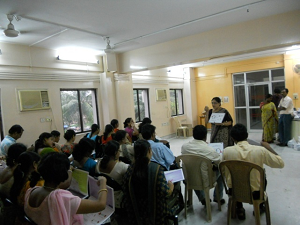Join a powerful, unprecedented alliance for better eye health for all.
Join IAPB-
Choose an alternate language here
The complexity of gender bias continues to infiltrate every level of the slum community in Kolkata and this has both a direct and an indirect impact on the eye health status of women. Women face barriers to access public services and this includes eye health services such as lack of access to disposable income, low levels of education, exclusion from household decision making and restrictions on mobility and time. Routine eye health checks are not integrated into general health or ante natal care. The Kolkata Urban Project targeted women living in the slums with the aim to reduce blindness in this vulnerable group. The strategies used included:
 Outreach services: Community based eye health services were provided close to where women lived to enable access. Those requiring specialized services such as surgery are provided with free transport to the hospital to address the women’s lack of access to resources.
Outreach services: Community based eye health services were provided close to where women lived to enable access. Those requiring specialized services such as surgery are provided with free transport to the hospital to address the women’s lack of access to resources.
Presence of obstetrician in primary eye care clinics: This enabled pregnant women to have access to eye health screening that is not provided routinely. It helped to ensure that this vulnerable target group was reached.
Awareness raising targeting mothers: Women in the antenatal and postnatal period were provided with information related to harmful traditional practices, and the prevention of ophthalmic neonatorum and other eye infections. Pregnant women received information about the importance of primary immunizations such as measles, which can cause blindness especially when vitamin A deficiency is also present.

Women as Health volunteers: Women who have been beneficiaries of the project were trained as health volunteers and could effectively motivate and convince other women to come out and use the services.
The significant uptake of eye services by women such as cataract surgery, eye tests, and a doubling of the purchase of affordable spectacles demonstrated the success of the strategies. Although one project cannot change the prevailing gender inequality in society or break socially embedded constructs of masculinity, at least the project has tried in its own way to touch this sensitive nerve of society and at the same time has created a ripple in the policy world.

Sightsavers India
[email protected]